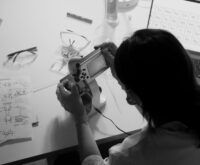Let’s get one thing straight: the conversation around AI and job displacement is getting loud. It’s almost impossible to scroll through a news feed without seeing a headline that screams about robots coming for our jobs. The narrative is usually one of doom and gloom, painting a picture of a future where humans are obsolete, replaced by hyper-efficient algorithms. And if you’re feeling a little anxious about it, you’re not alone. It’s a massive, world-altering topic. But is the story really that simple? Is it just a zero-sum game of human versus machine?
Honestly, it’s not. The reality is far more nuanced, more complex, and, frankly, more interesting than the sci-fi dystopia many imagine. This isn’t just about jobs being lost; it’s about the very nature of work itself being redefined. We’re on the cusp of a transformation, not an apocalypse. It’s a shift that will require us to be adaptable, curious, and more human than ever before. So, let’s cut through the noise, look at the facts, and figure out what this AI revolution actually means for you and your career.
Key Takeaways
- It’s a Transformation, Not an Apocalypse: AI is more likely to change and augment existing jobs than to eliminate them entirely on a mass scale. The focus is shifting from task completion to strategy and oversight.
- History Repeats Itself (Sort of): Major technological shifts, like the Industrial Revolution and the internet, have always caused job displacement, but they’ve also created entirely new industries and roles.
- Human Skills are the New Superpower: Skills like critical thinking, emotional intelligence, creativity, and complex problem-solving are becoming more valuable than ever because they are incredibly difficult for AI to replicate.
- Adaptability is Non-Negotiable: The key to thriving isn’t fighting against AI, but learning to work with it. This means embracing lifelong learning, upskilling, and getting comfortable with new technologies.
The Real Conversation About AI and Job Displacement
When we talk about AI and job displacement, the image that often comes to mind is a factory robot physically replacing a human on an assembly line. That’s a very 20th-century view of automation. Today’s AI is different. It’s cognitive. It can write code, analyze medical scans, draft legal documents, and create marketing copy. This means the impact is no longer confined to blue-collar, manual labor jobs; it’s knocking on the door of the knowledge worker.
But ‘displacement’ isn’t the same as ‘elimination’. Think about the introduction of spreadsheets. Did they eliminate accountants? No. They eliminated the tedious, time-consuming task of manual ledger-keeping. This freed up accountants to focus on higher-value work: financial analysis, strategic planning, and client advising. The job wasn’t destroyed; it was elevated. This is the model we’re seeing play out with AI. It’s a powerful tool that’s incredibly good at handling repetitive, data-heavy, and predictable tasks. And let’s be honest, those are usually the most boring parts of our jobs anyway.
A Look Back: Technological Shifts Aren’t New
A little historical perspective goes a long way. In the early 19th century, the Luddites famously smashed textile machines, fearing these new technologies would leave them destitute. They weren’t wrong to be scared—their specific jobs were indeed becoming obsolete. But they couldn’t have imagined the millions of new jobs that the Industrial Revolution would eventually create, from factory managers and engineers to railroad conductors and telegraph operators. Fast forward to the 1980s and 90s. The personal computer and the internet arrived, and panic ensued about the end of administrative assistants, travel agents, and librarians. While those roles changed dramatically, the digital economy spawned countless new careers in web development, digital marketing, cybersecurity, and social media management. Each wave of technology washes away some jobs but also carves out the landscape for new ones to flourish.
Which Jobs Are Actually on the Chopping Block?
So, who should be paying the closest attention? It’s not about specific job titles so much as the tasks that make up those jobs. The roles most vulnerable to AI disruption are those that are heavy on routine, predictability, and data processing. It’s work that can be broken down into a clear set of rules and instructions.
- Data Entry and Basic Processing: This is a prime target. AI can read, sort, and enter data from various sources with a speed and accuracy no human can match.
- Routine Customer Service: Think chatbots and AI-powered call centers. They can handle a huge volume of basic queries—password resets, order tracking, simple FAQs—freeing up human agents for complex, emotionally charged customer issues.
- Certain Paralegal and Legal Research Work: Sifting through thousands of documents for specific case law or precedents is a task AI is perfectly suited for. It can find relevant information in seconds, not days.
- Entry-Level Content Creation: Generating simple product descriptions, basic news reports from a data feed, or social media updates are all within the capabilities of current AI models.
- Basic Bookkeeping: Tasks like invoice processing, expense categorization, and bank reconciliation can be almost fully automated with AI-powered accounting software.
The common thread here is repetition. If your job consists of doing the same thing over and over again based on a predictable set of inputs, it’s a signal that you need to start thinking about how to evolve your skill set.

It’s Not Just Displacement, It’s Transformation
Framing this entire shift as a ‘loss’ is a mistake. It misses the other, more exciting half of the equation: job augmentation and job creation. For every task an AI takes over, it opens up an opportunity for a human to focus on something more strategic, creative, or interpersonal. The future of work isn’t a human-less wasteland; it’s a partnership.
The Augmentation Effect: Your New AI Coworker
Instead of thinking of AI as a replacement, think of it as the world’s most capable intern or assistant. It can handle the grunt work, allowing you to operate at a higher level. A graphic designer can use AI to generate dozens of initial concepts in minutes, then apply their unique taste and expertise to refine the best one. A programmer can use an AI co-pilot to write boilerplate code, debug errors, and suggest optimizations, freeing them up to focus on complex architectural problems. A doctor can use an AI to analyze patient data and medical imagery to spot patterns they might have missed, leading to earlier and more accurate diagnoses.
The goal is not to compete with AI. It’s to figure out what AI cannot do and double down on those skills. It’s about leveraging AI to amplify our own abilities, making us better, faster, and smarter at our jobs.
The Birth of New Careers
Just as the internet created the ‘Social Media Manager,’ AI is creating a whole new class of jobs that sound like they’re straight out of a science fiction novel. But they are very real, and they are in demand right now.
- Prompt Engineer: This is essentially a new kind of translator—someone who is an expert at communicating with AI models to get the best possible output. It requires a blend of creative writing, logic, and a deep understanding of how the AI ‘thinks’.
- AI Ethicist / Bias Auditor: As AI systems become more powerful, ensuring they are fair, transparent, and unbiased is critical. These professionals work to identify and mitigate harmful biases in AI algorithms.
- AI Trainer / Data Curator: AI models are only as good as the data they’re trained on. This role involves selecting, cleaning, and labeling vast datasets to teach AI systems how to perform specific tasks.
- AI Product Manager: Someone has to bridge the gap between the technical capabilities of AI and real-world business needs. This role defines the vision and strategy for new AI-powered products and features.
- Automation Specialist: These experts help businesses integrate AI and automation tools into their existing workflows, identifying opportunities to improve efficiency and productivity.
These are just a few examples. The list will grow in ways we can’t even predict yet. The key is that these new roles require a deep understanding of both technology and a specific domain, combined with uniquely human skills.
How to Future-Proof Your Career in the Age of AI
Okay, so the world is changing. What can you actually do about it? Sitting back and hoping for the best is not a strategy. The good news is that the path forward is clear, even if it requires effort. It’s about being proactive, not reactive.
Embrace Lifelong Learning (No, Really)
The idea of ‘finish school, get a job, work for 40 years’ is dead. We have officially entered an era of continuous learning. You don’t need to go back and get another four-year degree, but you do need to cultivate a mindset of curiosity. Dedicate a few hours each week to learning something new. It could be taking an online course on data analysis, watching tutorials on a new piece of software, or reading articles about AI trends in your industry. The goal is to stay just a little bit ahead of the curve. Companies like Coursera, edX, and even YouTube are treasure troves of accessible knowledge.
Double Down on Your “Human” Skills
What can you do that a machine can’t? This is the most important question you can ask yourself. AI is great at computation, but it’s terrible at compassion. It can analyze data, but it can’t lead a team through a crisis or negotiate a complex business deal with nuance and empathy. These ‘soft’ skills are now ‘power’ skills.
- Critical Thinking & Problem-Solving: The ability to look at a complex, ambiguous problem and devise a novel solution.
- Creativity: Connecting disparate ideas in new ways, thinking outside the box, and bringing a unique aesthetic or perspective to your work.
- Communication & Collaboration: Working effectively in a team, articulating ideas clearly, listening actively, and building relationships.
- Emotional Intelligence: Understanding and managing your own emotions and recognizing and influencing the emotions of others. It’s the core of leadership, sales, and effective teamwork.
- Adaptability & Resilience: The ability to thrive in an environment of constant change and bounce back from setbacks.
These are the skills that will set you apart. Focus on roles and projects that allow you to exercise these muscles.

Get Your Hands Dirty with AI Tools
Don’t be afraid of the technology. The best way to understand AI is to use it. Sign up for ChatGPT, Midjourney, or other generative AI tools. Play with them. See what they’re good at and, more importantly, where they fall short. Use them to help you with your current job. Ask one to help you brainstorm ideas for a presentation or to summarize a long report. By integrating these tools into your workflow, you not only become more efficient but you also demystify the technology and start to see it as a collaborator rather than a threat.
The Bigger Picture: Societal and Economic Shifts
Of course, this transition won’t be seamless for everyone. There are significant societal challenges we need to address. Governments and educational institutions have a massive role to play in modernizing curricula and creating accessible reskilling programs. We need to have serious conversations about a social safety net for those whose jobs are displaced and how to ensure the economic benefits of AI are distributed broadly, not just concentrated at the top. This is a challenge that extends far beyond individual career choices and requires collective action and thoughtful policy.
Conclusion
The rise of AI isn’t an event we can choose to ignore. It’s a fundamental shift in how we work and live. While the fear of AI and job displacement is understandable, a more productive approach is to view this moment as an opportunity for transformation. It’s a chance to automate the mundane and elevate the meaningful. It’s a call to invest in our most human qualities: our creativity, our empathy, and our ability to learn. The future doesn’t belong to the AI, and it doesn’t belong to the humans who fight against it. It belongs to the humans who learn to work with it, who see it not as a rival, but as a powerful new tool in their arsenal.
FAQ
Will AI take my job?
It’s unlikely that AI will completely eliminate your job. It’s more likely that AI will automate certain tasks within your job. This will change what your day-to-day work looks like, pushing you to focus on more strategic, creative, and interpersonal responsibilities that AI can’t handle. The key is to adapt by learning how to use AI as a tool.
What are the safest jobs from AI?
Jobs that are safest from AI disruption are those that rely heavily on uniquely human skills. These include roles requiring deep emotional intelligence (like therapists or social workers), complex physical dexterity and problem-solving in unpredictable environments (like plumbers or electricians), high-level strategic thinking and leadership (like C-suite executives), and pure creativity (like artists or novelists). Any job that is non-routine and requires compassion, negotiation, and complex critical thinking is well-positioned for the future.
How can I start learning about AI?
You can start small and for free. Begin by using publicly available tools like ChatGPT or Google’s Bard to understand how they work. Watch introductory videos on YouTube from channels like ‘CrashCourse AI’. For more structured learning, platforms like Coursera and edX offer beginner-friendly courses from top universities, such as ‘AI For Everyone’ by Andrew Ng. The most important step is simply to start and cultivate your curiosity.



 The Future of AI: What’s Next for Artificial Intelligence?
The Future of AI: What’s Next for Artificial Intelligence?  Understanding Neural Networks: A Beginner’s Guide
Understanding Neural Networks: A Beginner’s Guide  Ethical Concerns of AI: Bias, Privacy, and Our Future
Ethical Concerns of AI: Bias, Privacy, and Our Future  AI and Automation: How It’s Changing Everything
AI and Automation: How It’s Changing Everything  AI for Small Businesses: Your Ultimate Guide to Growth
AI for Small Businesses: Your Ultimate Guide to Growth  AI Tools for Freelancers: Boost Your Productivity Now
AI Tools for Freelancers: Boost Your Productivity Now  DeFi’s Hurdles: Security, Scalability & Regulation
DeFi’s Hurdles: Security, Scalability & Regulation  How to Read a Crypto Whitepaper: A Beginner’s Guide
How to Read a Crypto Whitepaper: A Beginner’s Guide  Find Undervalued NFT Projects: A Complete Guide
Find Undervalued NFT Projects: A Complete Guide  Blockchain Consensus Mechanisms Explained (PoW vs. PoS)
Blockchain Consensus Mechanisms Explained (PoW vs. PoS)  NFTs & Music: Empowering Artists in the Digital Age
NFTs & Music: Empowering Artists in the Digital Age  Trader’s Psychology: Master Fear & Greed in Markets
Trader’s Psychology: Master Fear & Greed in Markets